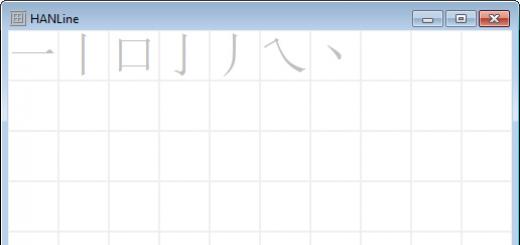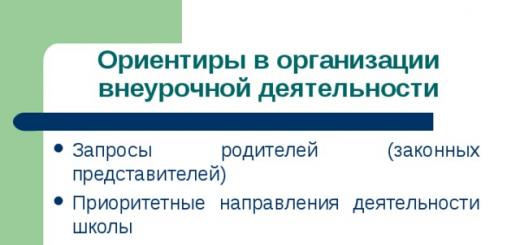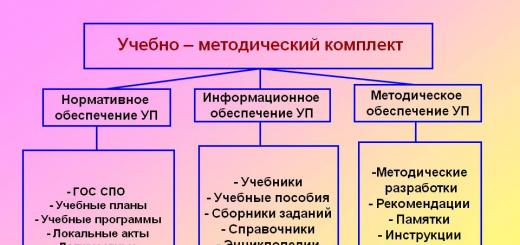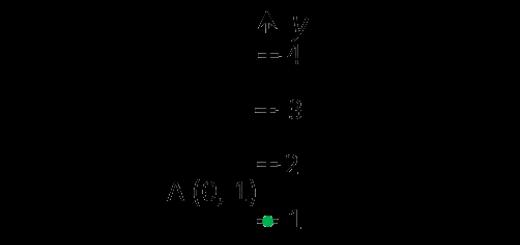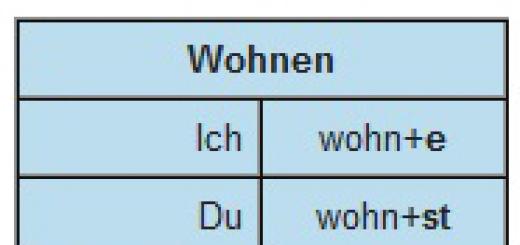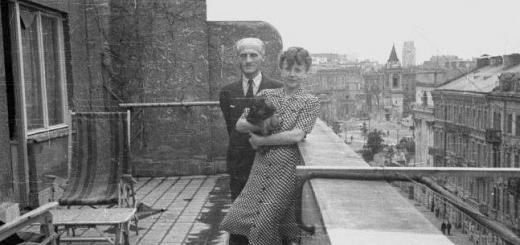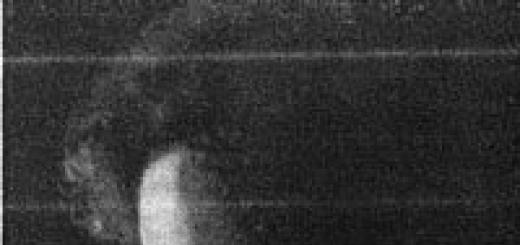On May 8, 1945, in the Berlin suburb of Karshorst, the Act of Unconditional Surrender of Nazi Germany and its armed forces was signed.
The act of unconditional surrender of Germany was signed twice. On behalf of Dönitz, Hitler's successor after his supposed death, Jodl invited the Allies to accept Germany's surrender and organize the signing of the corresponding act on May 10. Eisenhower refused to even discuss the delay and gave Jodl half an hour to decide on the immediate signing of the act, threatening that otherwise the Allies would continue to launch massive attacks on German troops. The German representatives had no choice, and after agreement with Dönitz, Jodl agreed to sign the act.
On the part of the command of the Allied Expeditionary Forces in Europe, the act was to be witnessed by General Beddel Smith. Eisenhower offered to witness the act from the Soviet side to Major General I.A. Susloparov, a former representative of the Supreme Command Headquarters at the Allied command. Susloparov, as soon as he learned about the preparation of the act for signing, reported this to Moscow and handed over the text of the prepared document, requesting instructions on the procedure.
By the time the signing of the act of surrender began (preliminarily scheduled for 2 hours 30 minutes), there was no response from Moscow. The situation was such that the act might not have had the signature of the Soviet representative at all, so Susloparov ensured that a note was included in it about the possibility, at the request of one of the allied states, of a new signing of the act if there were objective reasons for this. Only after this did he agree to put his signature on the act, although he understood that he was extremely at risk.
The act of surrender of Germany was signed on May 7 at 2 hours 40 minutes Central European time. The act stipulated that unconditional surrender would take effect from 11 p.m. on May 8. After this, a belated ban on Susloparov from participating in the signing of the act came from Moscow. The Soviet side insisted on signing the act in Berlin with a significant increase in the level of persons who would sign the act and bear witness to it with their signatures. Stalin instructed Marshal Zhukov to organize a new signing of the act.
Fortunately, a note that was included at the request of Susloparov in the signed document allowed this to be done. Sometimes the second signing of an act is called the ratification of what was signed the day before. There are legal grounds for this, since on May 7 G.K. Zhukov received official instructions from Moscow: “The Headquarters of the Supreme High Command authorizes you to ratify the protocol on the unconditional surrender of the German armed forces.”
Stalin got involved in resolving the issue of signing the act again, but at a higher level, turning to Churchill and Truman: “The agreement signed in Reims cannot be canceled, but it cannot be recognized either. Surrender must be carried out as the most important historical act and accepted not on the territory of the victors, but where the fascist aggression came from, in Berlin, and not unilaterally, but necessarily by the high command of all countries of the anti-Hitler coalition.”
As a result, the United States and England agreed to re-sign the act, and the document signed in Reims to be considered the “Preliminary Protocol on the Surrender of Germany.” At the same time, Churchill and Truman refused to postpone the announcement of the signing of the act for a day, as Stalin requested, citing that there were still heavy battles on the Soviet-German front, and it was necessary to wait until the surrender came into force, that is, until 23:00 on May 8 . In England and the United States, the signing of the act and the surrender of Germany to the Western allies was officially announced on May 8; Churchill and Truman did this personally, addressing the people on the radio. In the USSR, the text of their appeals was published in newspapers, but for obvious reasons only on May 10.
It is curious that Churchill, knowing that the end of the war would be declared in the USSR after the signing of a new act, said in his radio address: “Today we will probably think mainly about ourselves. Tomorrow we will give special praise to our Russian comrades, whose valor on the battlefield was one of the great contributions to the overall victory."
Opening the ceremony, Marshal Zhukov addressed the audience, declaring: “We, the representatives of the Supreme High Command of the Soviet Armed Forces and the High Command of the Allied Forces... are authorized by the governments of the anti-Hitler coalition to accept the unconditional surrender of Germany from the German military command.” After this, representatives of the German command entered the hall, presenting a document of authority signed by Dönitz.
The signing of the act ended at 22:43 Central European time. In Moscow it was already May 9 (0 hours 43 minutes). On the German side, the act was signed by the Chief of Staff of the Supreme High Command of the German Armed Forces, Field Marshal General Wilhelm Bodewin Johann Gustav Keitel, the Chief of the Luftwaffe General Staff, Air Force Colonel General Hans Jürgen Stumpf, and General Admiral Hans-Georg von Friedeburg, who became the Commander-in-Chief of the German Fleet after the appointment of Dönitz as Reich President of Germany. The unconditional surrender was accepted by Marshal Zhukov (from the Soviet side) and Deputy Commander-in-Chief of the Allied Expeditionary Forces, Marshal Tedder (English: Arthur William Tedder) (Great Britain).
General Carl Spaatz (USA) and General Jean de Lattre de Tassigny (France) put their signatures as witnesses. By agreement between the governments of the USSR, USA and Great Britain, an agreement was reached to consider the procedure in Reims preliminary. However, in Western historiography, the signing of the surrender of the German armed forces is usually associated with the procedure in Reims, and the signing of the act of surrender in Berlin is called its “ratification.”
Soon, the solemn voice of Yuri Levitan sounded from radios across the country: “On May 8, 1945, in Berlin, representatives of the German High Command signed an act of unconditional surrender of the German armed forces. The Great Patriotic War, waged by the Soviet people against the Nazi invaders, has been victoriously completed.
Germany is completely destroyed. Comrades, Red Army soldiers, Red Navy men, sergeants, foremen, army and navy officers, generals, admirals and marshals, I congratulate you on the victorious end of the Great Patriotic War. Eternal glory to the heroes who died in battles for the freedom and independence of our Motherland!”
By order of I. Stalin, a grandiose salute of a thousand guns was given on this day in Moscow. By decree of the Presidium of the Supreme Soviet of the USSR, in commemoration of the victorious completion of the Great Patriotic War of the Soviet people against the Nazi invaders and the historical victories of the Red Army, May 9 was declared Victory Day.
On May 8, 1945, in the Berlin suburb of Karlshorst at 22:43 Central European time (May 9 at 0:43 Moscow time), the final Act of unconditional surrender of Nazi Germany and its armed forces was signed. But historically, the Berlin act of surrender was not the first.
When Soviet troops surrounded Berlin, the military leadership of the Third Reich was faced with the question of preserving the remnants of Germany. This was possible only by avoiding unconditional surrender. Then it was decided to capitulate only to the Anglo-American troops, but to continue military operations against the Red Army.
The Germans sent representatives to the Allies to formally confirm the surrender. On the night of May 7, in the French city of Reims, the act of surrender of Germany was concluded, according to which, from 11 p.m. on May 8, hostilities ceased on all fronts. The protocol stipulated that it was not a comprehensive agreement on the surrender of Germany and its armed forces.
However, the Soviet Union put forward a demand for unconditional surrender as the only condition for ending the war. Stalin considered the signing of the act in Reims only a preliminary protocol and was dissatisfied that the act of Germany’s surrender was signed in France, and not in the capital of the aggressor state. Moreover, the fighting on the Soviet-German front was still ongoing.
At the insistence of the leadership of the USSR, representatives of the Allies reconvened in Berlin and, together with the Soviet side, signed another Act of Surrender of Germany on May 8, 1945. The parties agreed that the first act will be called preliminary, and the second - final.
The final Act of unconditional surrender of Germany and its armed forces was signed on behalf of the German Wehrmacht by Field Marshal W. Keitel, Commander-in-Chief of the Navy Admiral Von Friedeburg, and Colonel General of Aviation G. Stumpf. The USSR was represented by the Deputy Supreme Commander-in-Chief, Marshal of the Soviet Union G. Zhukov, and the allies were represented by the British Air Chief Marshal A. Tedder. U.S. Army General Spaatz and French Army Commander-in-Chief General Tassigny were present as witnesses.
The ceremonial signing of the act took place under the chairmanship of Marshal Zhukov, and the signing ceremony itself took place in the building of the military engineering school, where a special hall was prepared, decorated with the state flags of the USSR, USA, England and France. At the main table were representatives of the Allied powers. The Soviet generals whose troops took Berlin, as well as journalists from many countries, were present in the hall.
After the unconditional surrender of Germany, the Wehrmacht government was dissolved, and German troops on the Soviet-German front began to lay down their arms. In total, from May 9 to May 17, the Red Army captured about 1.5 million enemy soldiers and officers and 101 generals based on the act of surrender. Thus ended the Great Patriotic War of the Soviet people.
In the USSR, the surrender of Germany was announced on the night of May 9, 1945, and by order of I. Stalin, a grandiose salute of a thousand guns was given in Moscow on that day. By decree of the Presidium of the Supreme Soviet of the USSR, in commemoration of the victorious completion of the Great Patriotic War of the Soviet people against the Nazi invaders and the historical victories of the Red Army, May 9 was declared Victory Day.
Reims. The city where French monarchs were crowned. Gothic famous cathedral. And the famous drink of the Champagne region. In the middle of the 20th century, Reims was chosen to draw a line under a terrible world tragedy. On May 7, 1945, at 2:41 a.m., the act of unconditional surrender of Germany was signed here. From the USSR it was signed by General Ivan Susloparov, from the Anglo-American allies by General Walter Bedell Smith and General Francois Sevez from France. From Germany - Admiral Friedeburg and General Jodl.
It is a well-known fact that Joseph Stalin was outraged by this move by the Allies. Here is what Georgy Zhukov writes about this in his memoirs:
“On May 7, J.V. Stalin called me in Berlin and said: “Today in the city of Reims the Germans signed an act of unconditional surrender. “The Soviet people, not the allies, bore the main burden of the war on their shoulders, so the surrender must be signed before the Supreme Command of all countries of the anti-Hitler coalition, and not just before the Supreme Command of the Allied Forces.”
Stalin writes to US President Harry Truman:
“I have received your message of May 7 regarding the announcement of the surrender of Germany. The Supreme Command of the Red Army is not confident that the order of the German command on unconditional surrender will be carried out by German troops on the eastern front. Therefore, we fear that, if the government of the USSR announces surrender today Germany, we will find ourselves in an awkward position and mislead the public opinion of the Soviet Union. It must be borne in mind that the resistance of the German troops on the eastern front is not weakening, and, judging by radio interceptions, a significant group of German troops directly declares their intention to continue resistance and not submit order... for surrender."
The persistence of the Soviet Union will be crowned with success: the unconditional surrender of Germany will be accepted in Berlin by the Supreme Command of all countries of the anti-Hitler coalition. This document marked the complete military defeat of Hitler's army. But this will only be on May 8th. And on the evening of May 6 in Reims, in the red college building where General Eisenhower's headquarters was located, events unfolded at rapid speed. General Semyon Shtemenko describes the events of these hours in his memoirs “The General Staff during the War Years”:
“On the evening of May 6, D. Eisenhower’s adjutant flew to the head of the Soviet military mission, General Susloparov. He conveyed the commander-in-chief’s invitation to urgently come to his headquarters. D. Eisenhower received I. A. Susloparov at his residence. Smiling, he said that Hitler’s General Jodl had arrived with a proposal to capitulate to the Anglo-American troops and fight against the USSR. “What do you, Mr. General, say to this?” asked D. Eisenhower. I. A. Susloparov also smiled. This means that the end of the war against Germany was approaching, although it was winding enemy in order to confuse the allies. Susloparov also knew that the German general (Admiral General) Friedeburg had been sitting on the headquarters of the commander-in-chief for several days, who, however, was unable to persuade D. Eisenhower to a separate agreement. The head of the Soviet military mission answered the head Anglo-American command that there are obligations jointly accepted by the members of the anti-Hitler coalition regarding the unconditional surrender of the enemy on all fronts, including, of course, on the eastern."
May 6, 1945 Three days before the Victory, the German garrison of Breslau, numbering about 100 thousand people, threw out white flags. Hitler planned to turn the city into German Stalingrad in order to delay the Red Army on the borders of the Reich, but the Nazis surrendered here too.Eisenhower convinced Susloparov that he demanded complete surrender from Jodl. The head of the Soviet military mission sends the text of surrender to Moscow. Time is running out: the signing is scheduled for 2:30 on May 7. Midnight. Instructions from Moscow never came. Susloparov decides to sign the document, but with certain conditions. Here is what Shtemenko writes:
“At the same time, providing the opportunity for the Soviet government to influence the subsequent course of events if necessary, he made a note to the document. The note stated that this protocol on military surrender does not exclude the future signing of another, more advanced act of surrender of Germany, if any Union Government declares so.”

Eisenhower agrees with this note. The document was signed and sent to Moscow. As Shtemenko writes, “in the meantime, a counter dispatch was already coming from there, which stated: do not sign any documents!” The message of surrender is not being circulated, documents show. On May 11, Susloparov was urgently recalled to Moscow and required to write an explanatory note. Stalin learns that no one violated his order - the telegram was just late. The Supreme Commander has no complaints against Susloparov. But his name rarely appears on the pages of military historical literature.
Firsov A.
On May 2, 1945, the Berlin garrison under the command of Helmut Weidling capitulated to the Red Army.
Germany's surrender was a foregone conclusion.
On May 4, 1945, a document was signed between the Fuhrer's successor, the new Reich President, Grand Admiral Karl Doenitz and General Montgomery, on the military surrender of northwestern Germany, Denmark and the Netherlands to the Allies and the associated truce.
But this document cannot be called an unconditional surrender of all of Germany. This was the surrender of only certain territories.
The first complete and unconditional surrender of Germany was signed on Allied territory at their headquarters on the night of May 6-7 at 2:41 a.m. in the city of Reims. This act of unconditional surrender of Germany and a complete ceasefire was accepted within 24 hours by the commander of the Allied forces in the west, General Eisenhower. It was signed by representatives of all allied forces.
This is how Viktor Kostin writes about this capitulation:
“On May 6, 1945, German General Jodl arrived at the American command headquarters in Reims, representing the government of Admiral Doenitz, who became the head of Germany after Hitler’s suicide.
Jodl, on behalf of Doenitz, proposed that Germany's surrender be signed on May 10 by the commanders of the armed forces, that is, the army, air force and navy.
The delay of several days was caused by the fact that, according to him, time was required to find out the location of the units of the German armed forces and bring to their attention the fact of surrender.
In fact, during these few days, the Germans intended to withdraw a large group of their troops from Czechoslovakia, where they were located at that time, and transfer them to the West in order to surrender not to the Soviet army, but to the Americans.
The commander of the Allied forces in the West, General Eisenhower, understood this proposal and rejected it, giving Jodl half an hour to think about it. He said that if they refused, the full might of American and British forces would be unleashed on the German troops.
Jodl was forced to make concessions, and on May 7, at 2:40 a.m. Central European Time, Jodl, General Beddel Smith from the Allied side and General Susloparov, the Soviet representative to the Allied command, accepted the surrender of Germany, which came into force at 23:1 May 8. This date is celebrated in Western countries.
By the time President Truman and British Prime Minister Churchill reported Germany’s surrender to Stalin, he had already scolded Susloparov for being too hasty in signing the act.”
The act of unconditional surrender of Germany on the German side, together with Colonel General Alfred Jodl, was signed by Admiral Hans Georg von Friedeburg.
The document signed on May 7, 1945 was called: “Act of unconditional surrender of all land, sea and air armed forces currently under German control.”
All that remained until the complete cessation of hostilities and the Second World War was the day allotted to the capitulating side to bring the Act of Unconditional Surrender to every soldier.
Stalin was not satisfied with the fact that:
The signing of unconditional surrender took place on territory occupied by the Allies,
The act was signed primarily by the leadership of the Allies, which to some extent belittled the role of the USSR and Stalin himself in the victory over Nazi Germany,
The act of unconditional surrender was signed not by Stalin or Zhukov, but only by Major General from Artillery Ivan Alekseevich Susloparov.
Referring to the fact that the shooting in certain places had not yet stopped, Stalin gave the command to Zhukov to arrange a re-signing of the unconditional surrender, immediately after the complete ceasefire on May 8, preferably in Berlin and with the participation of Zhukov.
Since there was no suitable (not destroyed) building in Berlin, the signing was held in the Berlin suburb of Karlhorst immediately after the ceasefire by German troops. Eisenhower refused the invitation to participate in the re-signing of the surrender, but informed Jodl that the German commanders-in-chief of the armed forces should appear to carry out the re-signing of the surrender at the time and place specified by the Soviet command for the signing of a new act with the Soviet command.
Georgy Zhukov came from the Russian troops to sign the second surrender, and Eisenhower sent his deputy, Air Chief Marshal A. Tedder, from the British troops. On behalf of the United States, the commander of the Strategic Air Forces, General K. Spaats, was present and signed the surrender as a witness; on behalf of the French armed forces, the Army Commander-in-Chief, General J. de Lattre de Tassigny, signed the surrender as a witness.
Jodl did not go to re-sign the act, but sent his deputies - the former chief of staff of the Supreme High Command of the Wehrmacht (OKW) Field Marshal W. Keitel, the Commander-in-Chief of the Navy, Admiral of the Fleet G. Friedeburg, and Colonel General of Aviation G. Stumpf.
The re-signing of the capitulation brought a smile to all the signers, with the exception of representatives of the Russian side.
Seeing that representatives of France were also participating in the re-signing of the capitulation, Keitel grinned: “What! Have we also lost the war to France?” “Yes, Mr. Field Marshal, and France too,” they answered him from the Russian side.
The repeated surrender, now from three branches of the armed forces, was signed on the German side by three representatives of three branches of the armed forces sent by Jodl - Keitel, Friedeburg and Stumpf.
The second unconditional surrender of Germany was signed on May 8, 1945. The date for signing the surrender is May 8th.
But the celebration of Victory Day on May 8th also did not suit Stalin. This was the day the surrender of May 7th came into effect. And it was clear that this surrender was only a continuation and duplication of an earlier one, which declared May 8th the day of a complete ceasefire.
In order to completely get away from the first unconditional surrender and to emphasize the second unconditional surrender as much as possible, Stalin decided to declare May 9th as Victory Day. The following arguments were used:
A) The actual signing of the act by Keitel, Friedeburg and Stumpf took place on May 8 at 22:43 German (Western European) time, but in Moscow it was already 0:43 on May 9.
B) The entire procedure for signing the act of unconditional surrender ended on May 8 at 22:50 German time. But in Moscow it was already 0 hours 50 minutes on May 9th.
D) The announcement of victory in Russia and the festive fireworks in honor of the victory over Germany took place in Russia on May 9, 1945.
Since Stalin's times in Russia, the date of signing the act of unconditional surrender is usually considered to be May 9, 1945, Berlin is usually called the place where the act of unconditional surrender was signed, and only Wilhelm Keitel is the signatory on the German side.
As a result of such Stalinist actions, Russians still celebrate May 9th as Victory Day and are surprised when Europeans celebrate the same Victory Day on May 8th or 7th.
The name of General Ivan Alekseevich Susloparov was erased from Soviet history textbooks, and the fact that he signed the act of unconditional surrender of Germany is still being kept silent in Russia.
Third unconditional surrender of Germany
On June 5, 1945, the four victorious countries announced the unconditional state and political surrender of Germany. It was formalized as a declaration of the European Advisory Commission.
The document is entitled: "Statement of the Defeat of Germany and the Assumption of Supreme Power over Germany by the Governments of the United Kingdom, the United States of America, the Union of Soviet Socialist Republics and the Provisional Government of the French Republic."
The document says:
"The German armed forces on land, on water and in the air are completely defeated and have unconditionally surrendered, and Germany, which bears responsibility for the war, is no longer able to resist the will of the victorious powers. As a consequence, the unconditional surrender of Germany has been achieved, and Germany submits to all demands that will be made to it now or in the future.".
In accordance with the document, the four victorious powers undertake to implement " supreme power in Germany, including all the powers of the German government, the Wehrmacht High Command and the governments, administrations or authorities of states, cities and magistrates. The exercise of power and the listed powers does not entail annexation of Germany".
This unconditional surrender was signed by representatives of four countries without the participation of representatives of Germany.
Stalin introduced similar confusion into Russian textbooks with the dates of the beginning and end of the Second World War. If the whole world considers the date of the beginning of the Second World War to be September 1, 1939, then Russia, since the time of Stalin, continues to “modestly” count the beginning of the war from July 22, 1941, “forgetting” about the successful capture of Poland and the Baltic states and parts of Ukraine in 1939 and about the failure of a similar attempt to capture Finland (1939-1940).
Similar confusion exists with the day the Second World War ended. If Russia celebrates May 9 as the day of the victory of the Allied forces over the German coalition and, in fact, as the day of the end of World War II, then the whole world celebrates the end of World War II on September 2.
On this day in 1945, the “Act of Unconditional Surrender of Japan” was signed aboard the American flagship battleship Missouri in Tokyo Bay.
On the Japanese side, the act was signed by Japanese Foreign Minister M. Shigemitsu and Chief of the General Staff General Y. Umezu. On the Allied side, the act was signed by US Army General D. MacArthur, Soviet Lieutenant General K. Derevianko, and British Fleet Admiral B. Fraser.
